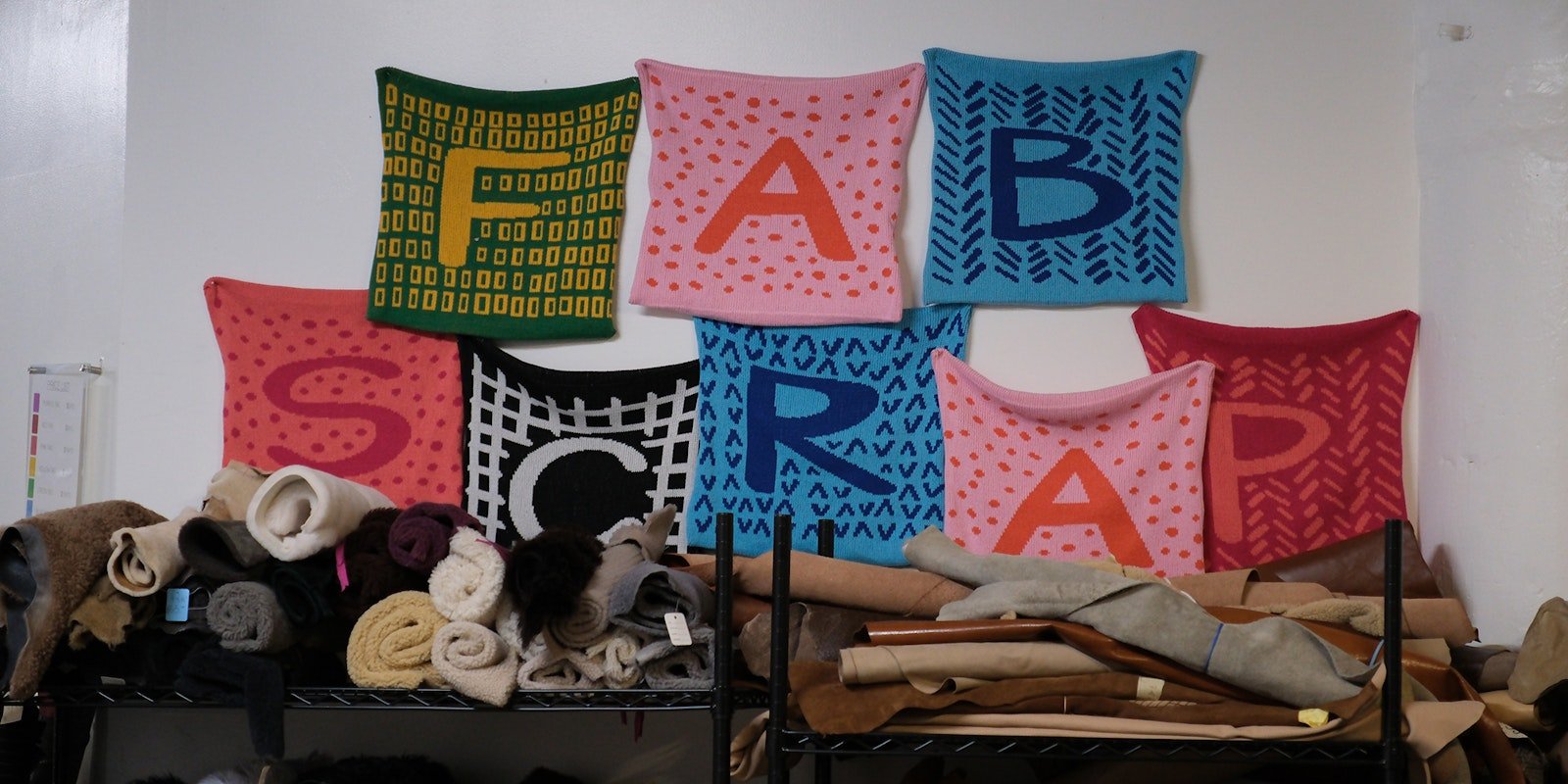Nestled in the Brooklyn Navy Yard, FABSCRAP is redefining our approach to textile waste. FABSCRAP is a nonprofit based in a repurposed industrial space that is dedicated to eliminating commercial textile rubbish and unlocking the full potential of unused fabric. One step into their facility brings the issue into sharp focus. Towering in the entryway is “The Pile,” an imposing wall of trash bags stuffed with fashion industry leftovers: fabric samples, swatches, and production scraps. The sheer magnitude of the waste is both striking and motivating, serving as a powerful reminder of fashion’s environmental impact.
 The backlog of textiles to be recycled, lovingly referred to as “The Pile.” These unprocessed materials take up about half of the warehouse space at FABSCRAP.
The backlog of textiles to be recycled, lovingly referred to as “The Pile.” These unprocessed materials take up about half of the warehouse space at FABSCRAP.
FABSCRAP’s core strength lies in its community-driven approach. Volunteers take two-and-a-half-hour shifts, in which they sort through fabric and salvage usable pieces while separating hardware and paper for recycling. FABSCRAP partners with an independent processing plant to turn waste textiles into recycled textile insulation.
FABSCRAP takes waste textile materials and turns them into recycled textile insulation for construction.
What is the payoff for the volunteers for this effort? A tangible reward in the form of five free pounds of fabric—yardage, remnants, or even mendable garments that can double as lessons in garment construction. Volunteers also enjoy 30 percent off additional materials, from zippers to yarn, making FABSCRAP a go-to resource for DIY enthusiasts, students, and sustainability advocates.
 Volunteers can get free and reduced-price textiles from the shop at FABSCRAP. All materials here are textile waste rescued from landfills and sorted by volunteers.
Volunteers can get free and reduced-price textiles from the shop at FABSCRAP. All materials here are textile waste rescued from landfills and sorted by volunteers.
The thing that makes FABSCRAP’s model so impactful is its emphasis on creating circular systems within the fashion industry. By pulling usable textiles out of the waste stream, the organization is not only reducing landfill contributions but also fostering a culture of reuse and conscious consumption. This ethos is embodied in the volunteers, who, by participating, gain firsthand knowledge of textile waste’s scope and the power of individual action. Below are some images of volunteers’ creations using materials from FABSCRAP.
These images demonstrate the breadth of creativity within the FABSCRAP community, from gnomes made from recycled felt, to a Princess Elsa costume for a volunteer’s niece, to beautifully intricate textiles woven from recycled yarn.
I found the experience of volunteering at FABSCRAP to be both humbling and inspiring. For many of us, confronting “The Pile” and working to dismantle it piece by piece fostered a profound sense of responsibility and potential. It’s a powerful reminder that even small actions (like sorting fabric swatches or choosing secondhand materials) can collectively create meaningful change. For sustainability enthusiasts or anyone eager to make a difference, FABSCRAP offers a unique and impactful way to contribute to the fight against textile waste.
For readers local to New York, volunteering at FABSCRAP is a perfect opportunity to connect with fellow makers and make a difference in the fight against fabric waste.
Resources
To learn more about volunteer opportunities and workshops, visit fabscrap.org/volunteer.
For the opportunity to contribute to FABSCRAP’s mission, and to purchase crafting supplies for extremely reasonable prices, visit shopfabscrap.org.
Jack Teehan is an undergraduate student at NYU Gallatin School of Individualized Study and an assistant archivist at NYU Special Collections. In their free time, Jack loves to knit, cook, and learn about material culture.







